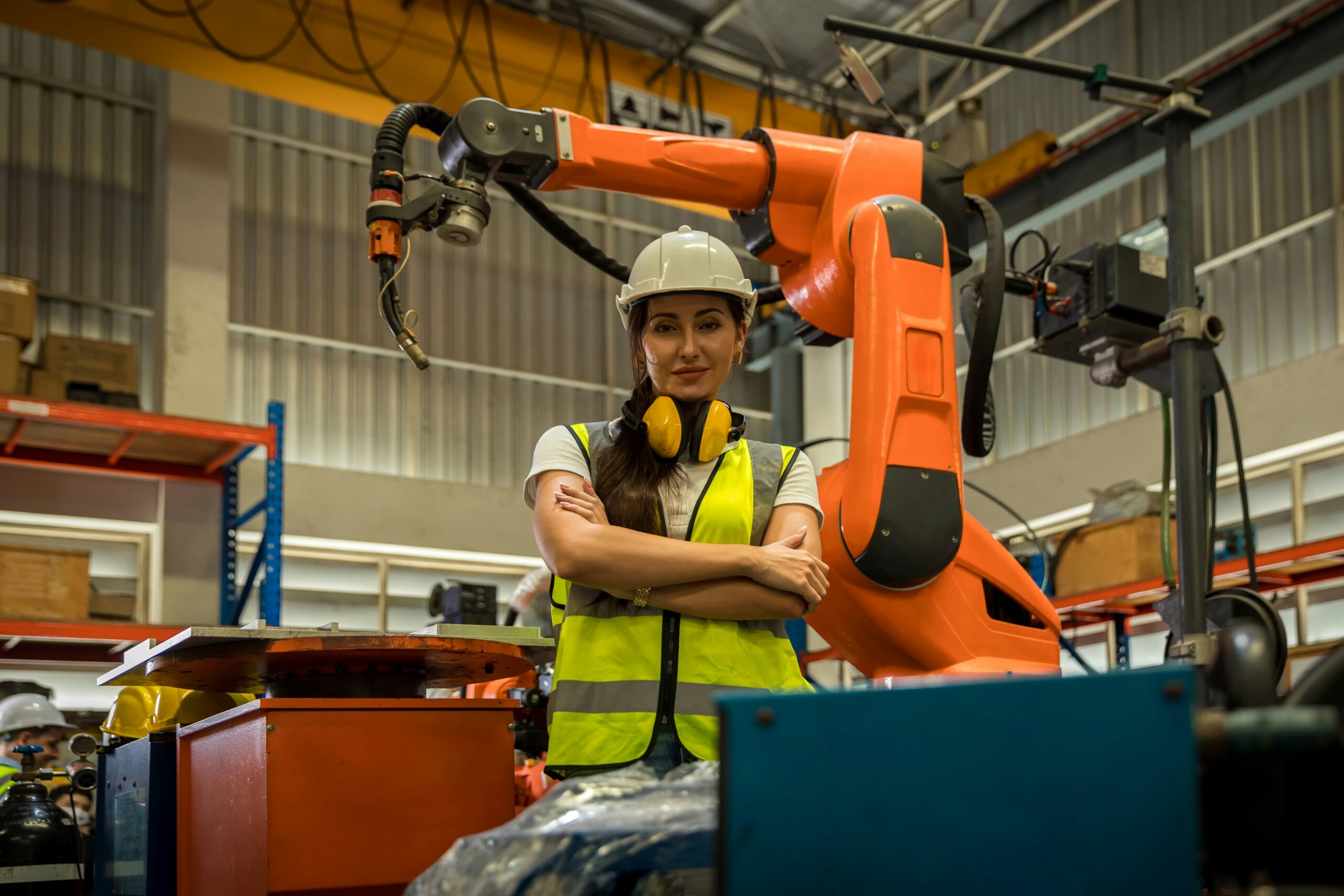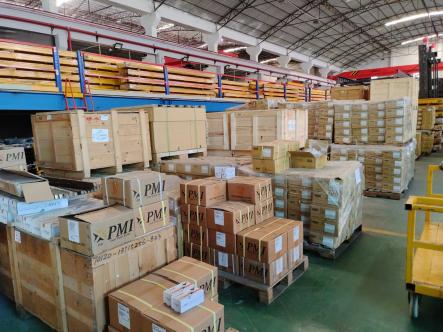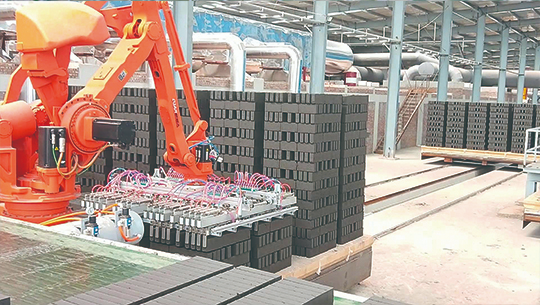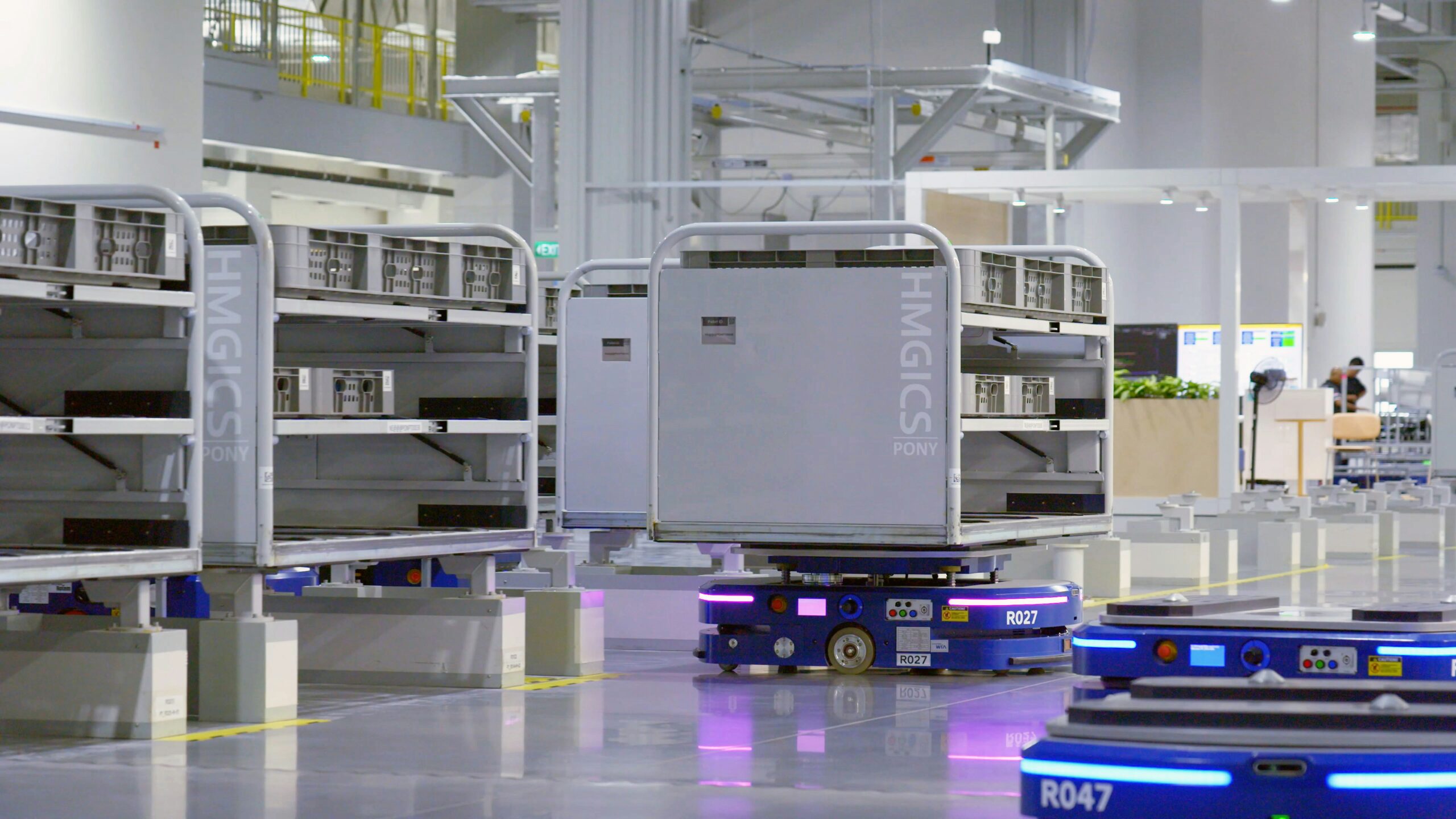Introduction
Extremely important in the fast-paced world of logistics are effectiveness and accuracy. The indispensability of incorporating sophisticated technology to optimize processes has increased as the sector progresses. Palletizing machines have revolutionized the way in which merchandise is organized, transported, and managed, among other technological developments. These sophisticated devices are not only enhancing operational effectiveness but also transforming the fundamental dynamics of global supply chains. The 800kg Payload 3159mm Reaching Distance Robotic Arm QJRB800-1, which is intended for high-load palletizing applications, is an example of such innovation. The integration of this technology into the logistics sector signifies a substantial advancement in the pursuit of unparalleled efficiency, precision, and dependability in palletizing procedures.
Recognizing this Functioning and Definition of Palletizing Robots
Specialized robotic systems, palletizing robots are designed to place products onto pallets in predetermined configurations while operating autonomously. Space optimization, product safety during transport, and the refining of warehouse and shipment operations are all critical considerations within the field of logistics pertaining to this procedure.
Varieties and Implementations
Each variant of these robots is ideally adapted for a distinct set of duties, ranging from straightforward layer palletizing to intricate patterns that demand extreme precision. For heavy-duty applications, the 800kg Payload 3159mm Reaching Distance Robotic Arm QJRB800-1 stands out in this category by combining strength and delicacy.
The QJRB800-1: An Examination in Greater Detail
Developed exclusively for high-load palletizing duties, the QJRB800-1 robotic arm is a powerhouse. Its armspan of 3159mm and payload capacity of 800kg guarantee stable and rapid operation along all axes. Facilitating equipment integration, its compatibility with specialized palletizing software renders it a highly advantageous tool in the field of logistics.

The Logistics Benefits of Palletizing Robots
Performance and Velocity
The implementation of palletizing robots, such as the QJRB800-1, substantially accelerates operations. The consistent precision and diligent effort they exhibit in their work expedite the processing of cargoes, thereby facilitating the acceleration of supply chain cycles.
Reduced Expenses and ROI
By automating the palletizing process, manual labor is eliminated, thereby reducing labor expenses and the likelihood of injuries. Their long-term advantages rapidly compensate for the initial investment required for these robots, rendering them a financially efficient solution for logistics operations.
Reliability and Security
By reducing human interaction with heavy loads and apparatus, palletizing robots contribute to the prevention of workplace accidents. The high precision with which robots such as the QJRB800-1 operate ensures that products are handled consistently and safely, thereby minimizing loss and damage.

Scalability and adaptability
A multitude of industries can benefit from palletizing robots as a result of their capability to conform to a variety of product sizes and shapes. The capacity of logistics operations to grow without compromising accuracy or efficiency allows them to expand without interruption in the face of rising demand.
Applications in the Real World and Case Studies
Robotic Brick and Tile Manufacturing Line
An exemplary case study that demonstrates the efficacy of palletizing robots in the realm of logistics can be observed within the masonry and tile sector. The implementation of the QJRB800-1 robotic arm has significantly improved both the operational efficiency and product quality of these assembly lines.

Project Synopsis
The QJRB800-1 was employed in this specific undertaking to sort heavy-duty pallets, thereby meeting the demanding load specifications of the brick and tile manufacturing process. The robot’s sophisticated functionalities empowered it to autonomously manage a wide spectrum of palletizing procedures, encompassing both basic and intricate configurations.
Technological Progressions
The introduction and operation of the QJRB800-1 robot led to notable progressions:
Production Flexibility
The robot’s capacity to load and discharge various types of bricks and tiles from the CNC machine tool in an automated manner, without the need to modify fixtures, demonstrated an exceptional level of adaptability.
Cost-Efficiency and Reduction
In addition to reducing labor expenses, the automation of repetitive duties that were previously executed manually increased production efficiency. The robust security features, high performance, and rapid response time of the QJRB800-1 robot further ensured its operational quality and dependability.

This case study emphasizes the critical function of palletizing robots in streamlining manufacturing procedures, emphasizing the effective integration of robotics in logistics to increase output and efficacy.
Palletizing Robot Implementation in Logistics Operations
Strategic Factors to Consider
The successful integration of palletizing robots into logistics operations necessitates meticulous planning and careful deliberation of multiple factors. Space constraints, existing system compatibility, and the necessity for employee training on the new software are critical factors that must be considered in order to achieve a successful implementation.
Vying for the Upper Hand
Although the advantages of incorporating palletizing robots are evident, initial investment requirements and resistance to change may present obstacles. Nevertheless, by making strategic investments, concentrating on long-term advantages, and offering exhaustive training to guarantee seamless transitions, these obstacles may be alleviated.
Future-Proofing Logistics
The implementation of sophisticated robotics technology, such as the QJRB800-1, guarantees that logistics operations remain adaptable to evolving technological landscapes and future market demands, in addition to being efficient and cost-effective.

Future Technological Trends in Logistics Robotics
With continuous progress in artificial intelligence, machine learning, and sensor technology augmenting the functionalities of palletizing robots, the future of robotics in logistics appears promising. These advancements hold the potential to enhance the effectiveness, adaptability, and wisdom of automated logistics solutions.
Increasing Application
The utilization of robotics in logistics is progressing beyond palletizing to include inventory management, order processing, and autonomous delivery systems. The expansion of this scope indicates the capacity of robotics to revolutionize all aspects of the logistics sector.
Consequences for the Supply Chain
The extensive application of robotics in logistics has the potential to significantly improve supply chain operations. This could lead to better customer satisfaction, lower costs, and higher levels of efficiency. Continuous technological development puts the logistics sector in a position never seen before for expansion and growth.
Conclusion
The use of robotics in logistics not only improves the efficiency of the supply chain, but it also paves the way for a future where automated solutions propel the sector forward. Logistics companies possess the capacity to attain operational excellence and sustain a competitive advantage in the international market by adopting and integrating these technological developments. The progression of palletizing robots from mere concept to actual implementation in logistics exemplifies the profound impact that automation will have on supply chains in the coming years.

